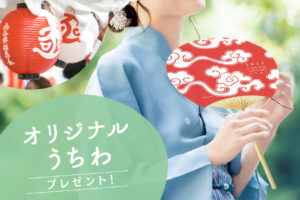
PR
March 16, 2019New station "Umekoji Kyoto West Station" opened between Kyoto Station and Tambaguchi Station on JR Sagano Line.The area has been a tourist destination until recently. Until recently, the area did not seem to be associated with tourism, but with the opening of the Kyoto Aquarium and the Railway Museum, it is attracting attention as a new tourist spot.
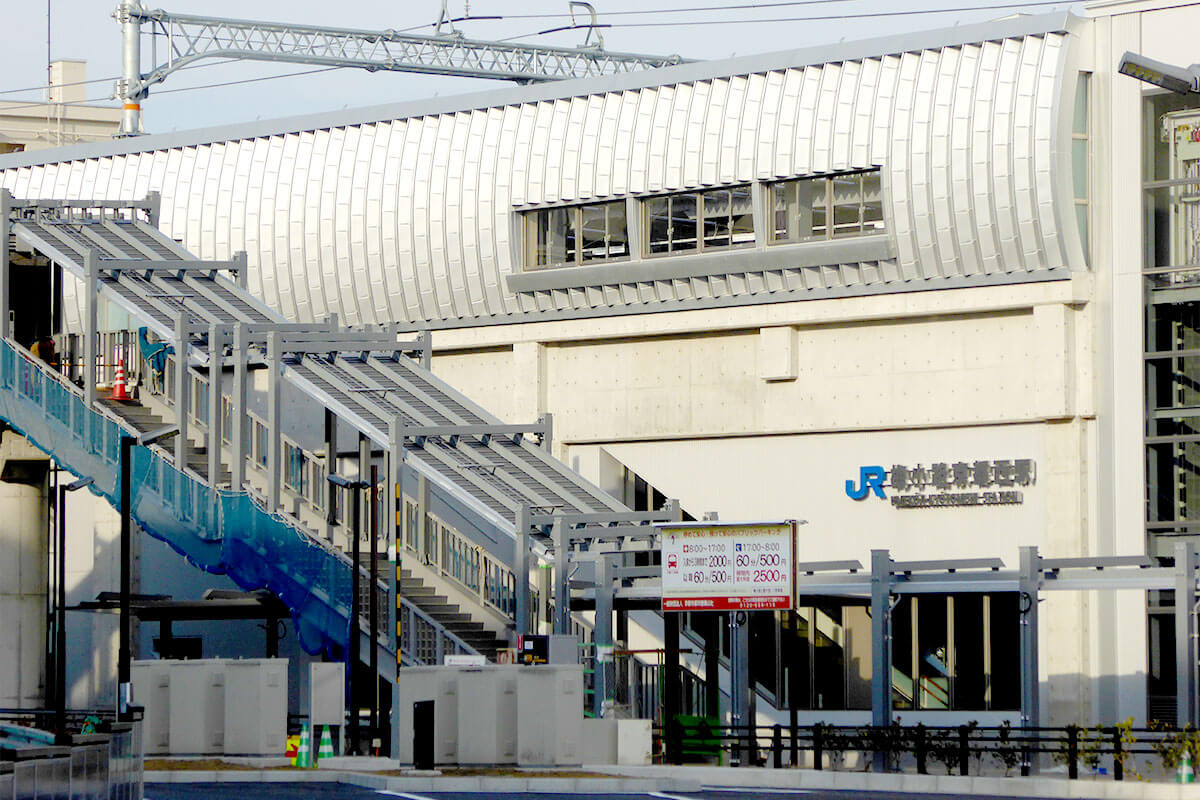
New station, Umekoji Kyoto West Station (before opening)
Now, this Umekoji area.Historically speaking, it is quite an interesting areaIt was. This name wasDerived from Umekoji Street in Heian-kyoIt seems to do so. It was a small street with a road width of about 12 meters, stretching from east to west on the west side of the then main street Suzaku-oji Avenue, one street north of Hachijo-oji Avenue. The area to the east was home to Shimabara, which once flourished as a flower district, and the East-West Koro-kan, which was used as a diplomatic mission of the Balhae Dynasty in the Heian period (today's guesthouse).
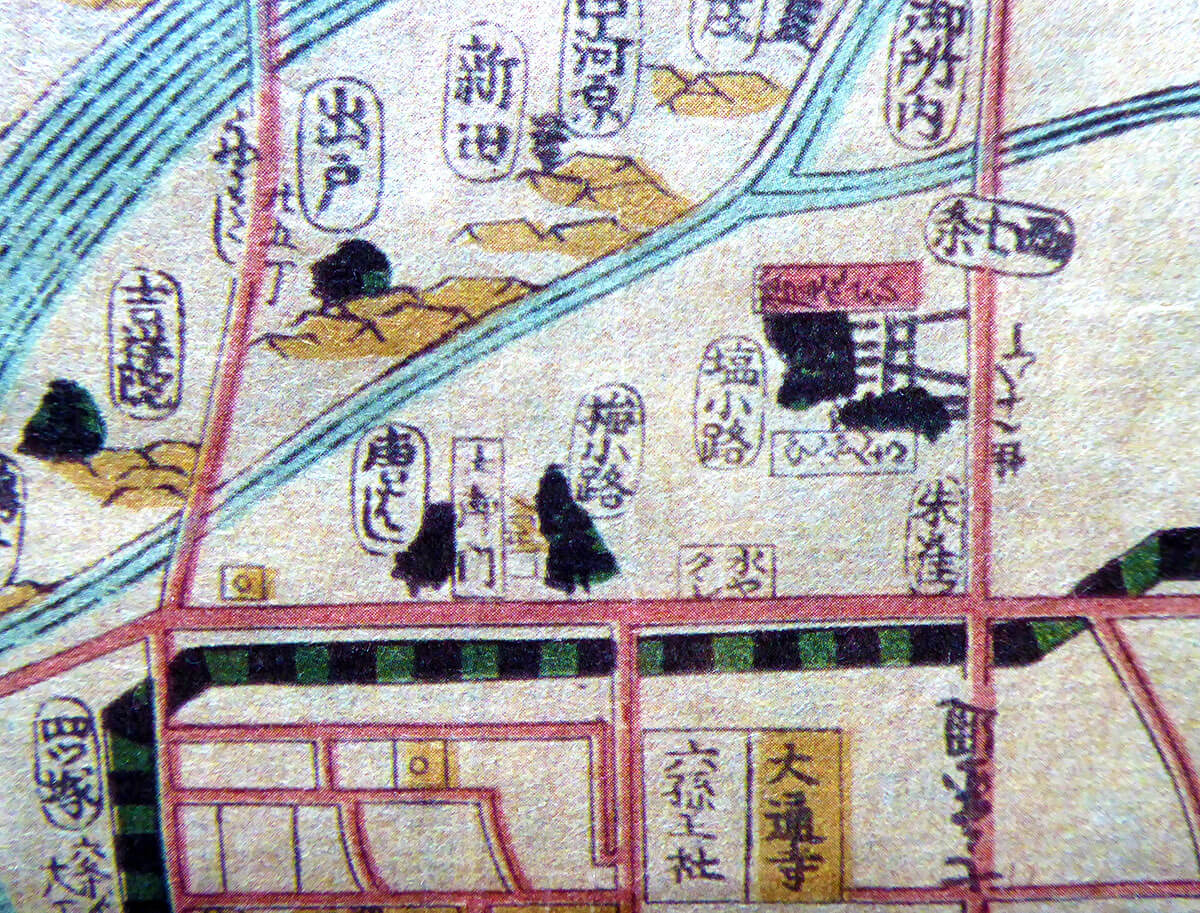
Edo period map (right side is north)
The words Umekoji and Tsuchimikado can be seen in the middle.
And,This area is a secret power spotThere is a reason why it is said to be so.
The old Umeji Village is home to the Tsuchimikado family, who served as yin-yang masters for generations in the Edo period.has set up a mansion wherewas.The originator of this system was Abe no Seimei, a yin-yang master active in the Heian period (794-1185).It is. It is said that the family was founded by Ariyo, the 14th generation counting from Seimei, and that the Tsuchimikado family took its name from his great-grandson's generation.
[related-article field="related1″].
Yin-Yang-Do is a system of witchcraft and divination that originated in the Chinese philosophy of Yin-Yang and the five elements, and developed uniquely in Japan.The Onmyoji is said to be the most famous of all the Onmyoji. Onmyoji are often associated with charismatic "ghostbusters" due to the influence of manga and movies featuring Abe no Seimei. In reality, however, Onmyoji are not only practitioners of witchcraft.Astrology and Astronomy are also an important part of the work of a Yin-Yang Master.was.
If you go down Shichijo Gozen for a while,Umebayashi Temple on the east side of the street and Enko-ji Temple a little further west.There are BothTemple associated with the Tsuchimikado familyIt is. Umebayashi Temple is the family temple of the Tsuchimikado family, and in the courtyard of the temple, there remains a stone for astronomical observation. It is said that this is the base of a marker called "Oomote," which is used to measure the shadows of the sun. A stone for an astronomical observatory called "Hunditenyi" also remains at Enko-ji Temple. Both of these stones are square and flat, with grooves carved in the shape of a cross on their surface, each pointing to the east, west, south, north, and south.The Tsuchimikado family's yin-yang masters must have looked up at the sky here and made astronomical observations.The first temple was located in the city of Kabul and the second in the city of Kabul. Unfortunately, however, both temples were closed to the public.
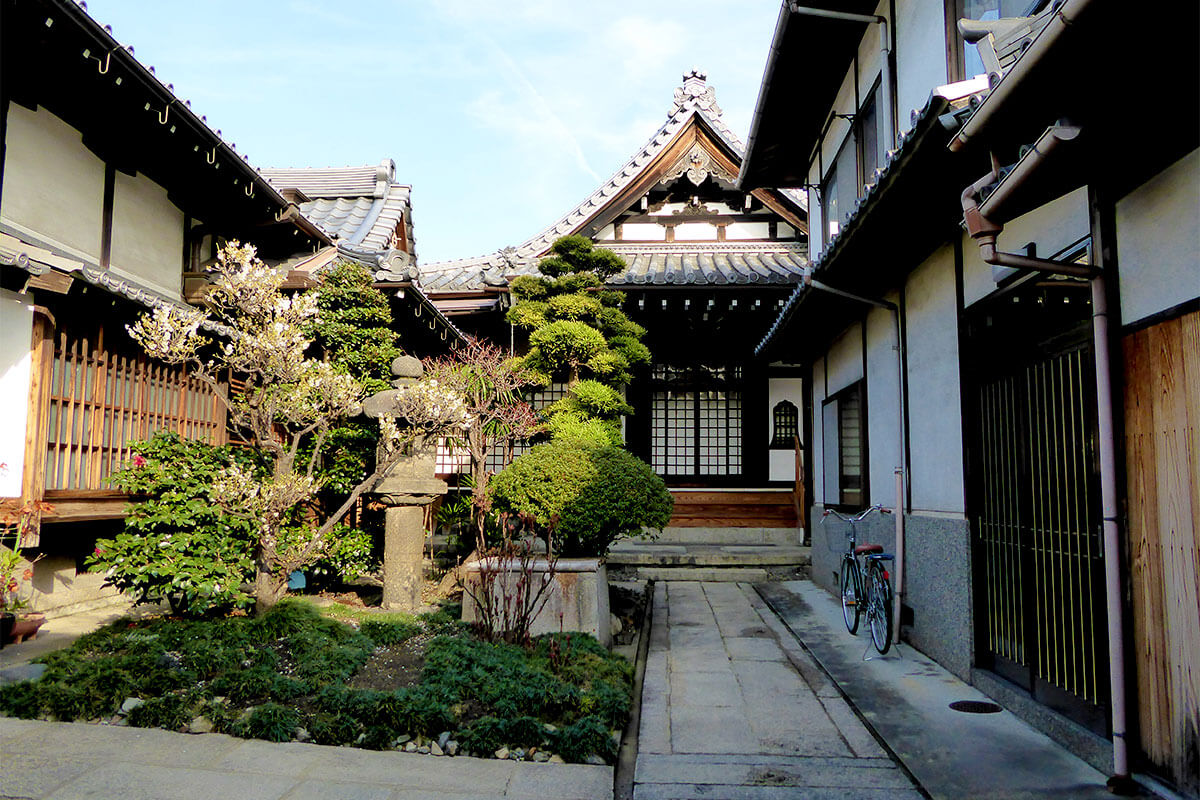
Umebirinji Temple, a family temple of the Tsuchimikado family
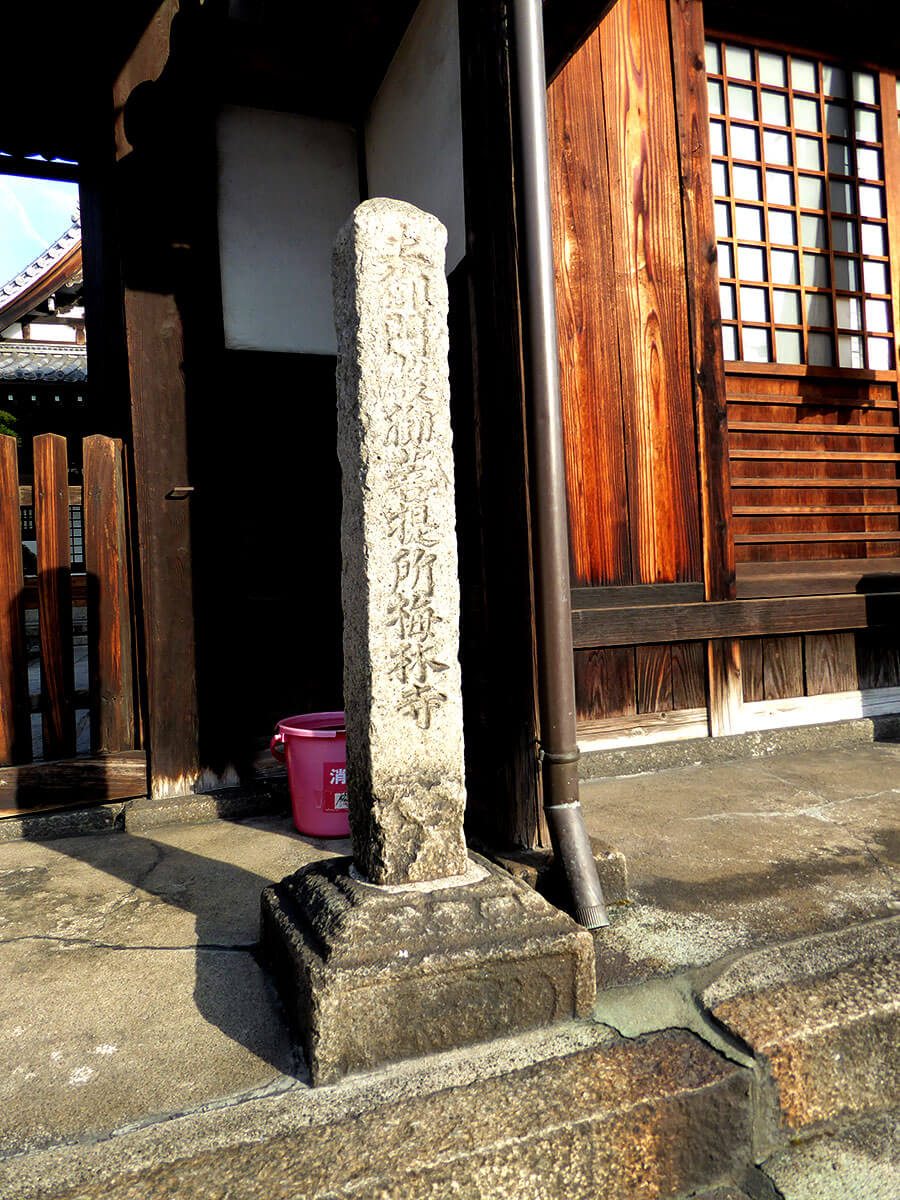
Stone monument of Tsuchimikado family's family temple
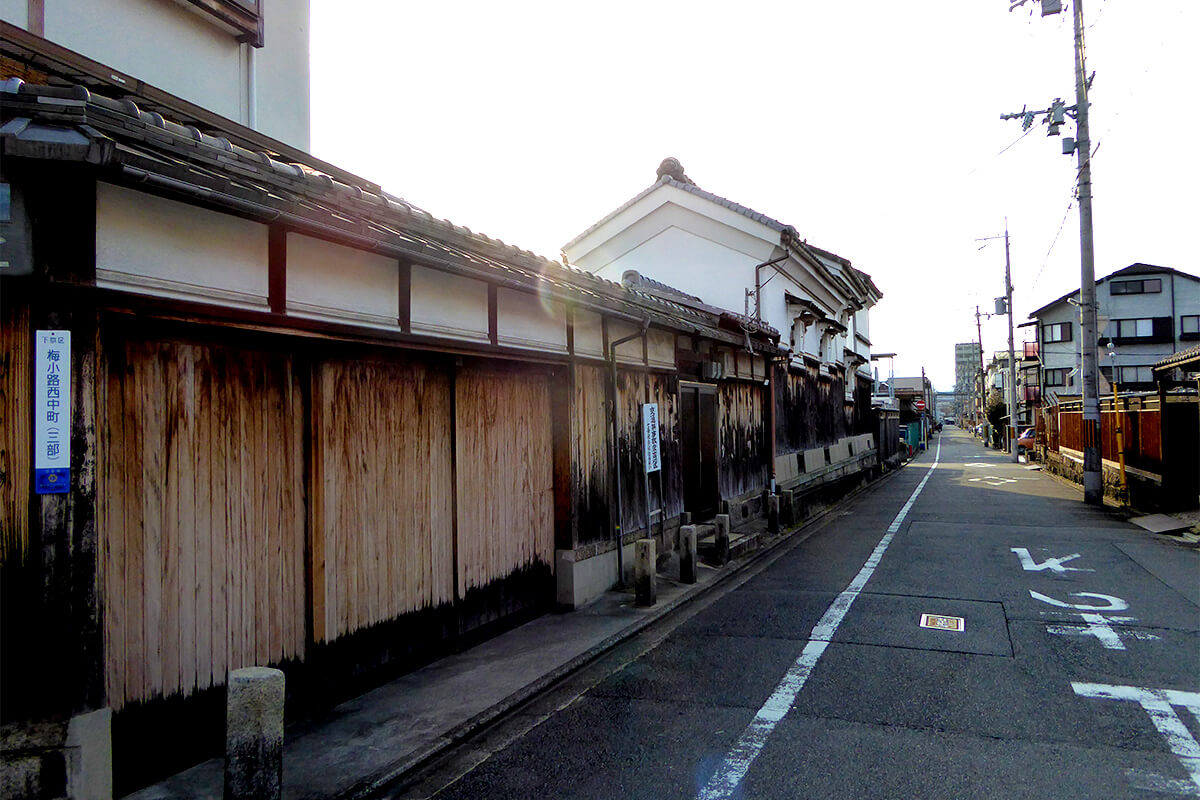
Enko-ji Temple, said to be the site of the Tsuchimikado family residence (side)
And there was one more interesting traditional event at the Umebayashi Temple.
Held annually on January 8.The "Gigi Bai Lecture."The temple priest passes a branch of sakaki to the lectors (householders of old houses in the old Umeji Village) during the sutra reading. In the middle of the sutra reading, the temple priest hands out sakaki branches to the lectors (owners of old houses in the former Umeji Village), who then take them one by one. Afterwards,The elders call out, "Jjibai, jjibai ko," and everyone holds a bundle of green bamboo about 20 cm long. To the accompaniment of the priest reading sutras and the sound of wooden fish, they pound a 3-m-long log placed in front of them with the green bamboo until the bamboo rustles vigorously.The event is called "the festival of the gods". It is said to be an event to protect crops from damage and to wish for a good harvest.
The use of green bamboo is probably due to the fact that bamboo has been considered sacred since ancient times as the dwelling place of the gods and possessing spiritual power. The logs are also said to resemble giant serpents that once inhabited the village bushes and destroyed crops. Since the Nishitakase River flowed through the village during this period, the river must have flooded and caused damage to crops. If so, it is easy to imagine that the rampaging river was compared to a giant snake. The Jjibai Ko has been registered as an intangible folk cultural asset by Kyoto City and continues to protect the crops in the area.
On the way back, I crossed Umekoji Park. The plum blossoms were in full bloom.With the birth of the JR Umekoji Kyoto West Station at the northwest corner of the park, the flow of people will change as the city changes its appearance.New history and legends will be added to Umekoji in the future.
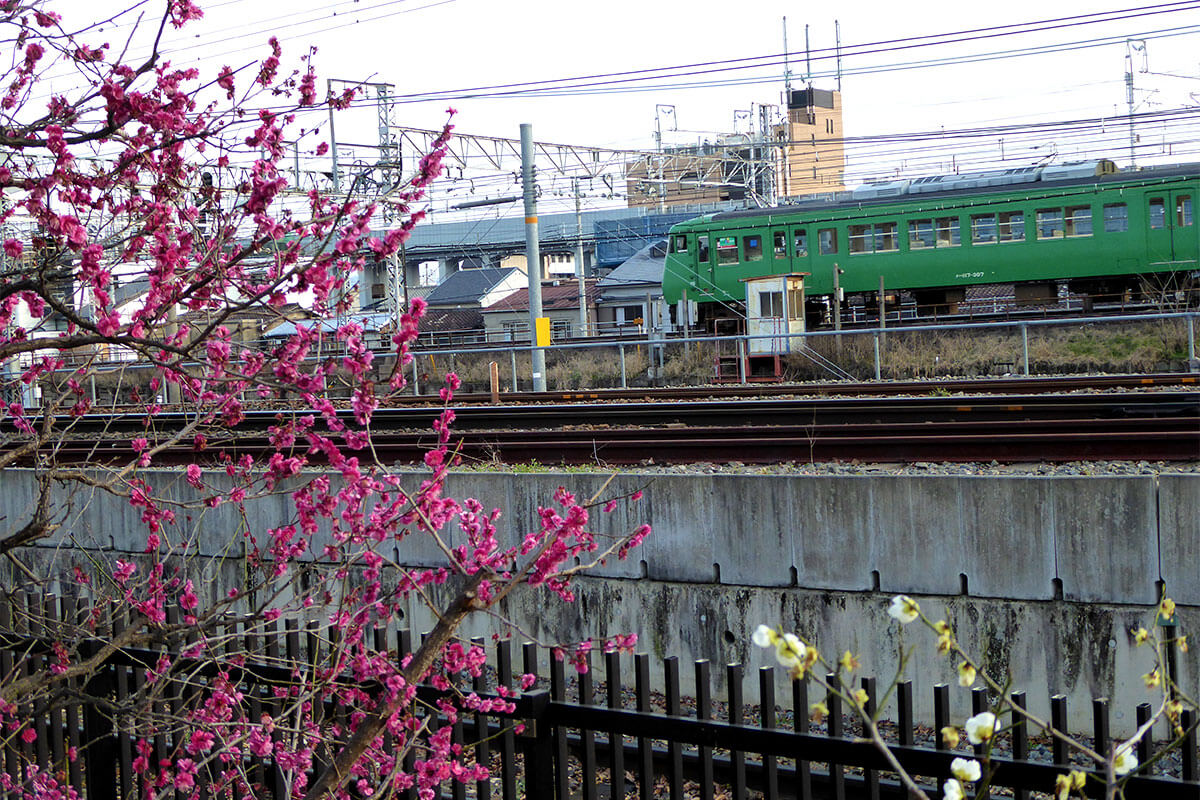
Plum trees and trains in Umekoji Park
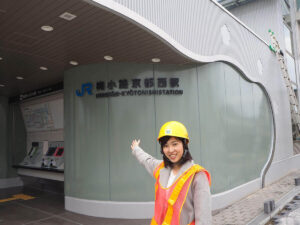
Umekoji area is hot this spring!
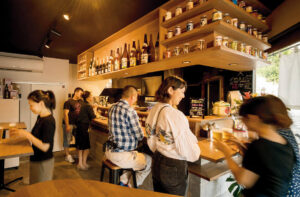
Umekoji Park, Kyoto Aquarium and Kyoto Railway Museum are not the only places to visit!
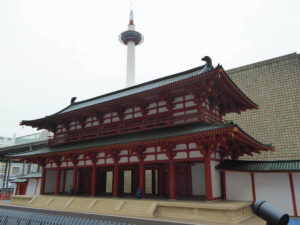
Demons come out at night and eat people!
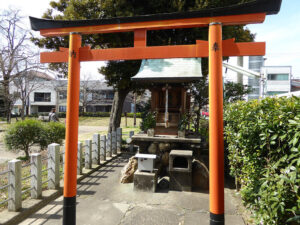
During the Heian period, the capital of Kyoto was the home of foxes, raccoon dogs, and ghosts!
Tradition that exists everywhere in the city of Kyoto. It is not just a picture, it is secretly alive in this modern age and continues to coexist with people. The two of Office TO, who previously wrote a series of articles "Kyoto's Demon World Exploration" in the monthly magazine Leaf, explore the mysterious "different" world of Kyoto, which was created over 1200 years. I will unravel the story while actually visiting the place. .
 News
News Feature article
Feature article Featured event
Featured event